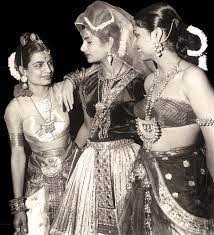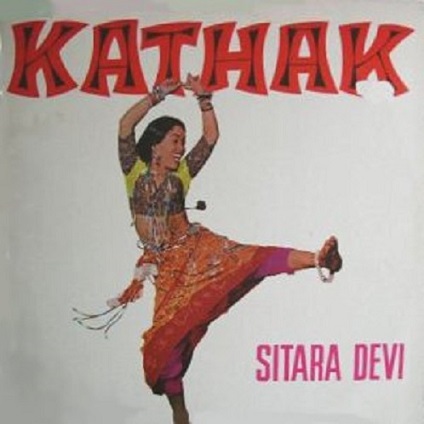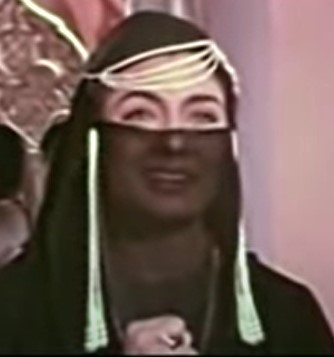Some months ago, I purchased a very interesting book, Illicit Worlds of Indian Dance, written by Anna Morcom. It is full of fascinating information, and I recommend it highly. It is basically an academic work, though, and I think there are quite a few places where the writing is a bit too academic for a general audience. On the other hand, there are some extremely well written parts, including her discussion of Pakeezah, which appears within the Introduction. Within this part, I especially appreciate the way she describes and analyzes the progression of the dances.
I have been meaning to quote from that Introduction for a while. (I thought that I had, but maybe only on Facebook, since my searches of my own blog aren’t revealing anything.) I have also wanted to return to posting about Pakeezah in general, because it still stands out as my favorite film from the ’70s and one of my favorites of all time.
And then somewhat more recently, our friend Tom prepared some superb video clips of all of the main Pakeezah songs. (I say the main songs, because there are also excellent songs within the background music, but they are not recognized by people nearly as much.)
Now, as many people know, it is the 43rd anniversary of Meena Kumari’s death. There is a lot to remember Meena Kumari for, but I think that when most people think about Meena Kumari on her death anniversary, for many reasons, the first thing that they think about is Pakeezah.
So, putting all these ideas together, I have decided to post Anna Morcom’s descriptions of the scenes and songs and illustrate them with Tom’s videos. I thought it would make for a nice tribute this year, and I hope that others agree.
As Sahib Jan becomes increasingly alienated from and ashamed of her life as a courtesan and moves instead toward “Suhagpur,” her mode of performance becomes increasingly disembodied. Inhin logon ne le liya dupatta mera (“It is those people who have taken my dupatta”), the song she performs before finding the letter, is carefree and flirty and she dances with an innocent abandon.
The next song, Thade rahio oh banke yaar re (“Stay awhile, handsome friend”), is much less light-hearted. In the song, she enacts an imaginary meeting with a lover who is present only in her mind. The song is never finished as a male audience member fires a shot part-way through.
Later, she performs Chalte chalte (“While walking along”) for the client who will take her out in a boat. Although the song is rhythmic and very danceable, she performs largely abhinay, expressive gestures with the upper half of the body while seated on the ground. This could be described as a partial dance and one that is embodied to a lesser degree. Later during the song, she gets up and dances in a curtailed and restrained way, faltering at one point. In contrast to this, two other courtesans dance energetically throughout, highlighting her distance from the scene.
Morcom then writes about half a paragraph on Sahib Jan’s actual meeting with the hero, Salim, and, especially, the emotional changes that take place. It’s too bad that Morcom skips over mentioning two excellent songs in the film, but it seems that she is mainly concerned with discussing the progression of the dances (and this is, after all, a book about dance). So, she moves right into her analysis of the climactic dance:
[S]he confides her feelings to her friend, seemingly resigning herself to her courtesan life in which she is a “living corpse” – body and soul disembodied to the point of a form of death. The sense of death and disembodiment is made complete in the finale, Aaj ham apni duaon ka asar dekhenge, “Today we shall see the outcome of our desires, the meaning of our dreams.” Halfway through the song, she smashes a glass lantern and dances on the broken glass, destroying her dancing feet, and with them her courtesan/performing/defiled body and persona.
Morcom writes quite a bit more about Pakeezah, but I think I will stop here, having finished the particular tribute that I wanted to post. I will probably return to Illicit Worlds of Indian Dance another time, and then, I will review the book a little further, hopefully without excerpting or quoting from it excessively (though I am tempted to do so, as you can see).
———————-
P.S. By the way, just a few weeks ago, on March 10, another person in this film actually celebrated a birthday, and she is alive and well (as far as I know), at the age of 66. That is Padma Khanna, Meena Kumari’s dancing double in “Aaj ham apni…” She presently lives in New Jersey, where she runs the Indianica Dance Academy.
P.P.S. Note on August 6, 2016: Unfortunately, the videos at the Tommydan site had to be taken down. Fortunately, for the time being, I am able to house these quality videos at my (much smaller and rarely used) YouTube site, which is where the links will bring you – at least for now.




Wonderful to read this, Richard. I never analysed the dances in this way. Pakeezah has so many facets to it, a new one is revealed at each viewing. It is my all time favorite movie as well.
So Tom’s been fixing Pakeezah videos, I am glad. He always makes them look so much better than they were.
I wish the Teer-e-nazar video was a wee bit longer, till Veena says “Shahbuddin” in that magnificent voice of hers. Ahhhhh.
Thanks, Ava. Yes, I agree with all your points. Pakeezah, as you might be able to tell, is one of my all-time favorites, too. (I would hate to have to name a single favorite of all time, but I can say that it is my favorite of any film that’s come out in at least the past 55 years. :) ) And you are right about Veena’s magnificent voice – she is wonderful in this film.
Enjoyed reading this. Thanks Richard. This happens to be one of my all time favourite films too.
Loved the description of the 4 ‘dance’ songs;
flirty – lover in her mind – highlights distance from the scene – destroying her dancing feet & with that her persona as a courtesan. Excellent.
The writer made a slip though.
Transalation of the last dance song in the text is written as;
“Today we shall see the outcome of our desires…”
The words translated actually mean;
“Today we shall see the effect of our prayers…”
The subtitles are correct.
‘effect’ or ‘outcome’ both being correct.
Richard, the analysis is very interesting, but the real explanation is much more prosaic, as it always is – the reason why Meena Kumari is shown sitting down for most of Chalte Chalte has nothing to do with ‘keeping her distance’. Meena was very sick by then, and spent most of her time between shots lying on a bed in the studio. Which is why Amrohi had two other dancers to actually dance. By the time Aaj hum apni rolled along, she could barely stand for the pain. Which is why Padma Khanna stepped in as her double.
I wish academicians bothered to do a bit of actual research before ‘analysing’ a song or film to bits. :) But it was nice to hear and see the songs again, especially the clean versions by Tom.
That’s an interesting analysis – thanks for sharing this, Richard.
Anu, I was thinking about that as well. I was wondering if the dances were so deliberately. Maybe Kamal did not set out to make them look this way. But the thing is, when a viewer is impressed with a work of art, they will see meanings in it that the creator never intended. It just means that the work of art is so good that it makes people pause and take another look at it.
Kamal did use a double in dances that required more energy, if he wanted the other dances to be more elaborate, I am sure he would have used a double as well. Even the songs get more sombre and are in tune with Sahibjaan’s mood of the moment.
Answering Anu first… Yes, I had read in a number of places that Meena was slowed down a lot by her illness and that this affected her ability to do any physical activity. And I had seen someone write the same thing that you did about the use of the two Kathak dancers… I knew all this while reading Anna Morcom’s analysis. But Morcom’s analysis makes sense also. Couldn’t it be that there is some truth to both answers? Meena Kumari didn’t have to “falter” as Morcom puts it; if that was an accident, it could easily have been fixed in another take. And as you pointed out, Amrohi knew to use a dancing double in “Aaj hum apni.” If it were important for Sahib Jan to be more active in the other dances, that problem could have been solved in a similar way. Additionally, I am sure that Morcom knew very well that Meena Kumari was ill at the time. She is no stranger to Hindi cinema in general; she had previously written a whole book on Hindi film songs. So, I think she must have been aware of the other perspective on this but stuck with her analysis anyway, and I am pretty convinced that in terms of how the dances connected to the plot, it is pretty correct, for the most part.
But Reeba, I don’t doubt that Morcom got the translation a little wrong and you are right about that. Even if it also says in her bio that Anna Morcom speaks fluent Hindi… She has never written English subtitles for Hindi films. :) I am glad, though, that you liked some of the descriptions as much as I did.
Madhu, thanks for the good word also.
Whether or not you all think that the analysis and description are totally correct, it’s good to see that you all found it interesting!
P.S. I wonder if anybody reading this comments section might get confused that I am addressing a series of names that don’t match the ones in the comments… Well, the answer is that I am speaking to a few people this time at once who have blogging or writing pseudonyms but don’t care if I address them by their real names and, in some cases, would actually prefer that I didn’t use the pseudonyms that they ended up getting stuck with. :)
Ava, your comment apparently posted while I was writing mine… I didn’t see it until after I had posted my comment, although it appears here before.
I like this point that you made: “But the thing is, when a viewer is impressed with a work of art, they will see meanings in it that the creator never intended. It just means that the work of art is so good that it makes people pause and take another look at it.”
In your second paragraph, you basically said some of the things that I was saying, at the same time. :)
“Aapke paaon dekhe. Bahut haseen hain. Inhein zameen par mat utariyega. Maile ho jaayenge.” A signature statement.
A period piece that evokes a lazy world of languor and leisure.Urdu,gazals, shayari come to mind.Words like Tawaif, nazaakat,tehzeeb, nawabs seduce.Pakeezah.The music, dances, lyrics, sets, narration go on to recreate a past which to many, an unrequited desire and a few ,heart tugging nostalgia.Ghulam Mohammad whose compositions never got the recognition it deserved like many others (Mirza Ghalib and Shama) was however more than followed up by Naushad after his death to help complete the film.Lata reminds of all the birds we hear no more on various perches of trees, watersprings, shrubs and bushes, and of many other seasons we never quite feel.Dances, ghungroos,strains of the harmonium, the drone of a sarod or sitar,the rapid and delayed beats with occasional silences of the Tablas and fluid sounds of pouring liquor fill the ambience of another world dream like.
A celebration of all the best of Meena Kumari and her mystique by Kamal Amrohi.This year is also the 43rd anniversary of the passing away of Meena kumari.
In passing I am compelled to think of another period classic.In Bengali this time of Jalsaghar.But that is for another time…..
In case you were not born or do not quite remember the great cosplay of sorts read on to hear the lilting and very intoxicating tunes at
https://roughinhere.wordpress.com/…/words-by-anna-morcom-…/…